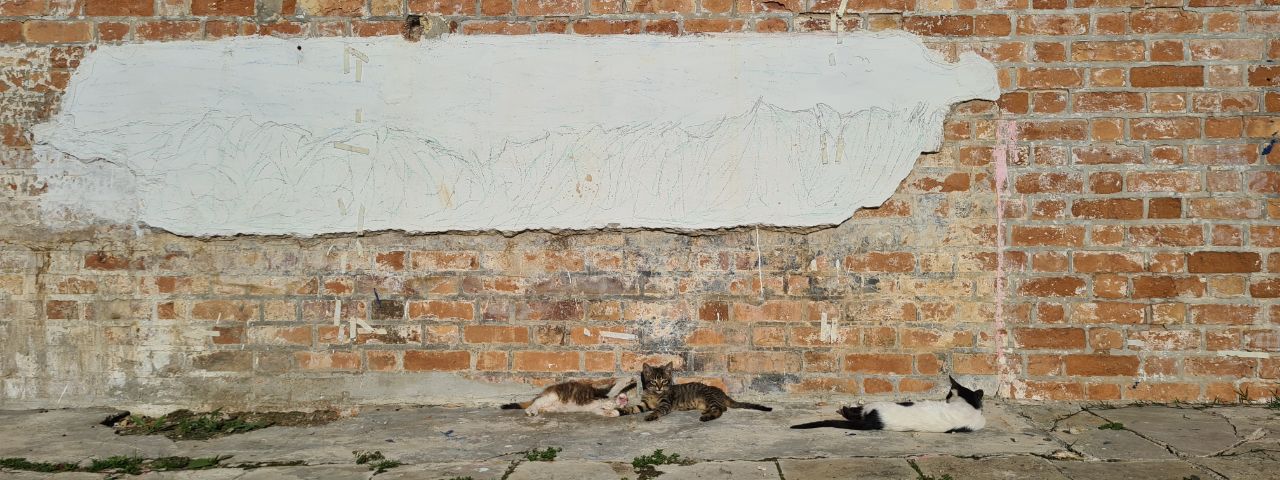The story about Tangier begins with a ferry crossing. The Strait of Gibraltar is one of the world’s busiest shipping lanes, with hundreds of ships passing daily. Algeciras is Spain’s largest port, handling over 100 million tons of cargo annually. Our initial plan was to depart from Tarifa port, but we changed plans the day before – Algeciras seemed better due to its proximity to Gibraltar and better pricing. Good deal, right? We bought tickets and Tangier seemed within reach. Well, not quite…
The situation turned comical when we realized we were the only pedestrian passengers. The ferry was delayed by an hour, and we stood alone in the waiting room, wondering if they had forgotten us. They hadn’t – finally staff escorted us to the ferry like VIPs. First by two staff members, then handed off to three others midway. It was both funny and awkward having a five-person team just to escort us to the ferry. Not to mention all the other staff – the ones that issued tickets, others checked them, then some scanned our backpacks, and finally customs checkup.
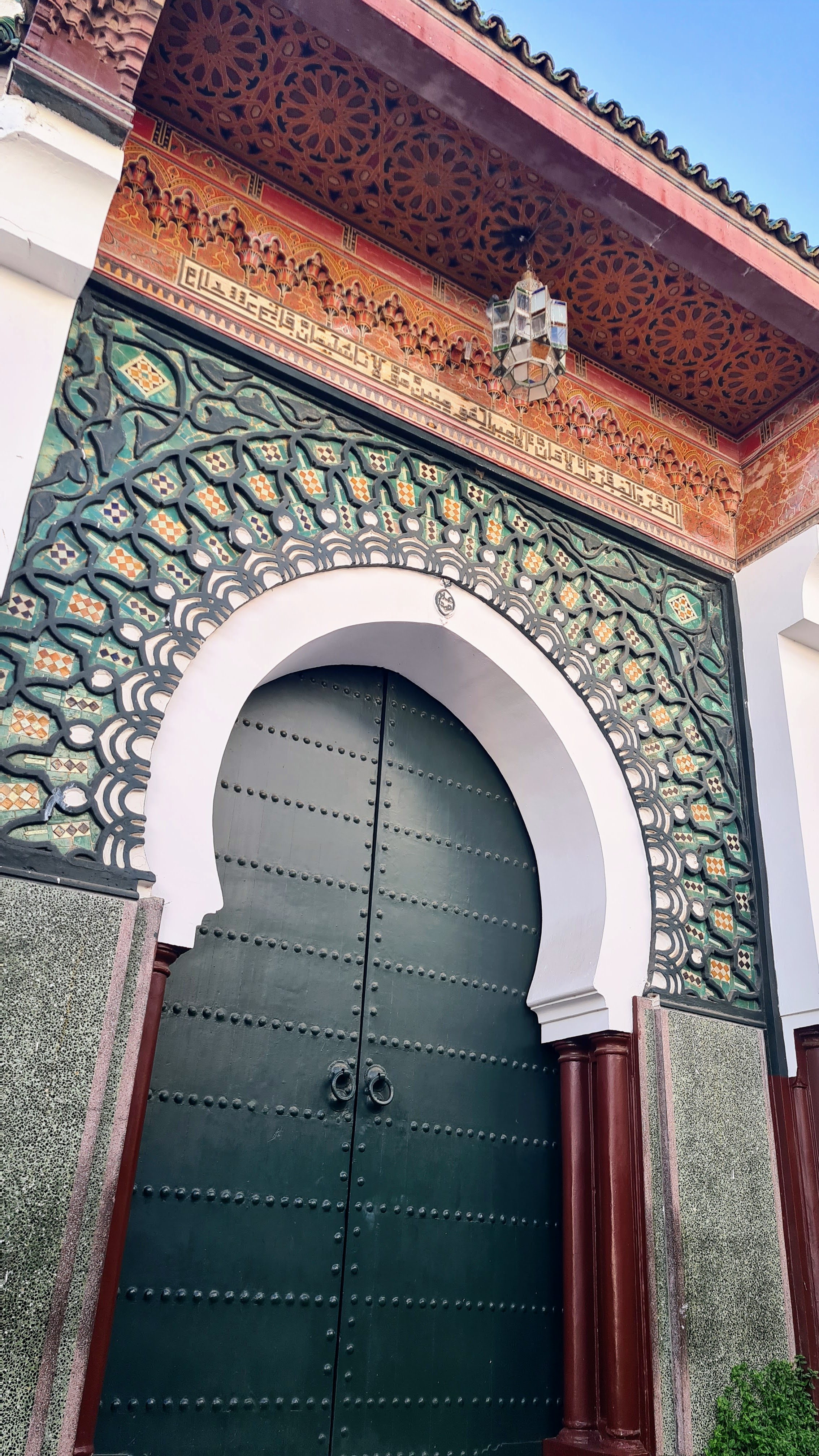
Note about the ferry: Bring a pen, as you’ll need to fill out an arrival form. After departure, you must submit this form with your passport to get your Morocco entry permit. There were far fewer passengers than on ferry to Sweden – maybe a tenth as many. Mostly men – I counted only three women.
While docking in Morocco, we understood why there were so few pedestrian passengers. When I first saw the Google Maps route to our accommodation, I thought GPS was malfunctioning. Then reality hit like a car hits a cat on a dark road – we weren’t at Tangier city port, but at Tangier Med terminal, 50 kilometers outside the city! Almost midnight. Our accommodation’s check-in deadline is 23:30 according to booking.com, and we were stuck in an industrial port where everyone only spoke French. Various scenarios ran through our heads – maybe we’d have to sleep among containers, or better yet, stay on the ferry and return to Spain?
On the street, we negotiated with taxi drivers. The trip to Tangier: 30 euros, 45 minutes. I messaged our accommodation asking if they were still waiting. We got a positive response. We jumped in a taxi and set off on dark Moroccan roads. I wore my seatbelt, while the driver was armed with confidence and prayers playing on the radio. After midnight, we finally reached our beds. What an entrance to Morocco!
We stayed in a traditional riad – an authentic Moroccan house with an inner courtyard. Riads are architectural masterpieces built around a central courtyard, often featuring a fountain, pool, or garden. This courtyard isn’t just aesthetic – it provides natural ventilation and cooling in Morocco’s hot climate. While riad exterior walls are typically modest, the interior amazes with luxurious decor and traditional ornaments. The garden and water features symbolize the Islamic concept of paradise. Riads are usually multi-storied, with all rooms opening to the inner courtyard, creating a harmonious living space.
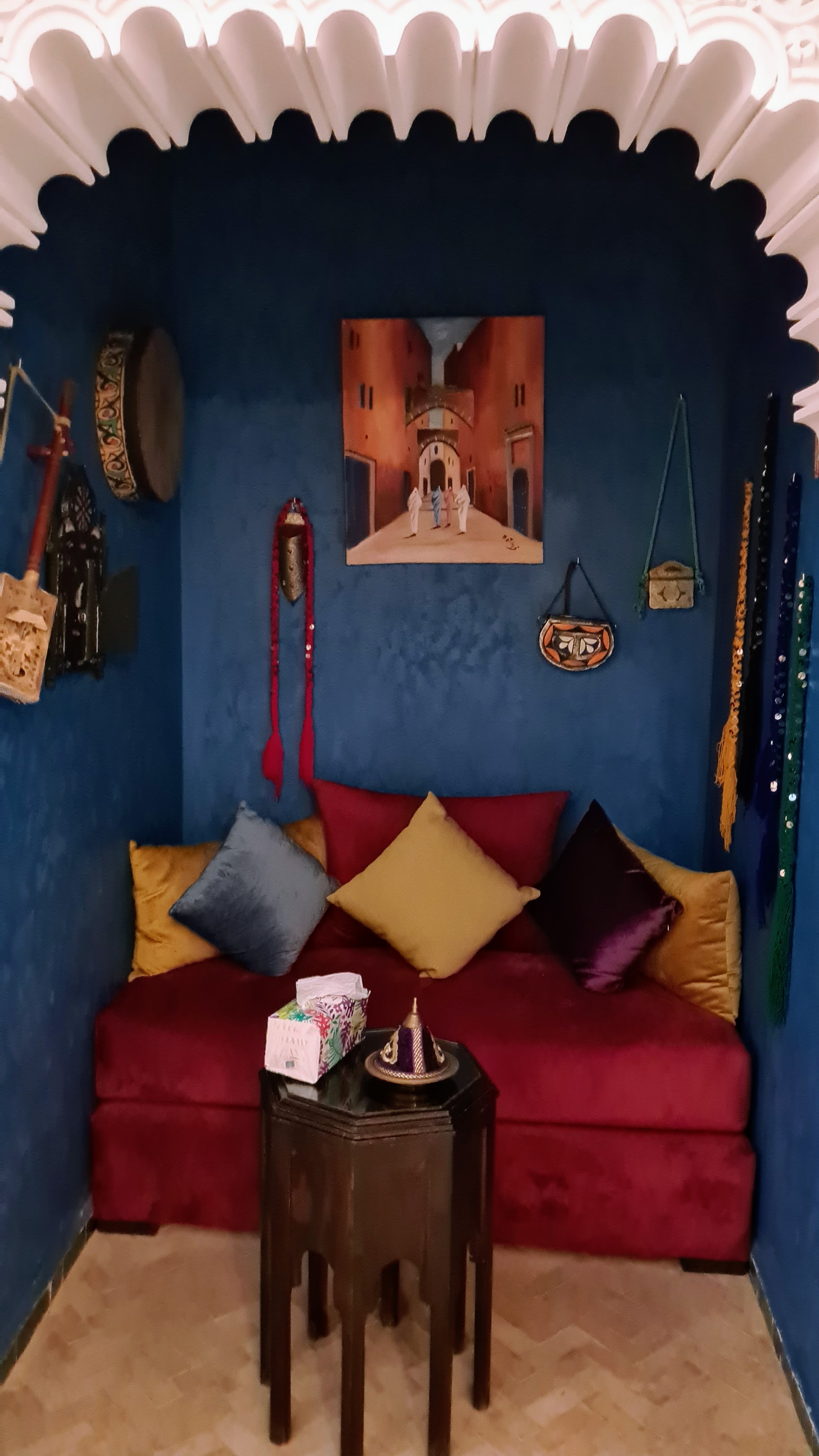
At 6 AM, the muezzin’s call to morning prayer wakes us. I turn over – after yesterday’s adventures, I’m not in a mood to rise early. Finally opening our eyes, we enjoy an excellent breakfast: fresh eggs, traditional mint tea, and freshly squeezed juice. Now it is time to explore Tangier’s streets.
Tangier, historically known as Tingis, has a colorful history. The city’s name is linked to Tinga – wife of Berber king Antaeus. According to legend, Antaeus was a powerful giant living in the Atlantic region, defeated by Hercules in one of his labors. After Antaeus’s death, Tinga founded the city named after her.
Tingis flourished as a Phoenician trading colony from the 12th century BC. The Phoenicians first recognized its strategic importance near the Strait of Gibraltar. Later, the city became part of Carthage, and after Carthage’s fall in 146 BC, joined the Roman Empire. In the 7th century, following Arab conquests, the city became Tangier.
20th century Tangier history is particularly interesting – it had 9 rulers in three decades. In 1912, after division of Morocco, Tangier went to Spain. A decade later, it became an international zone governed by Spain, France, UK, and Italy. Later Belgium, Netherlands, Portugal, and Sweden joined the administration. Tangier became an international zone, a playground for diplomats, spies, and artists. Perhaps due to this former aura, James Bond and Jason Bourne also visited here.
The city became an oasis of freedom and creative revolution, where people could freely create and live alternative lifestyles, avoiding Western society’s constraints. Artists like Eugène Delacroix and Henri Matisse visited and created here, with Tangier’s influence clearly visible in Matisse’s canvases. Beat generation writers, including Jack Kerouac, also couldn’t resist Tangier’s charm.
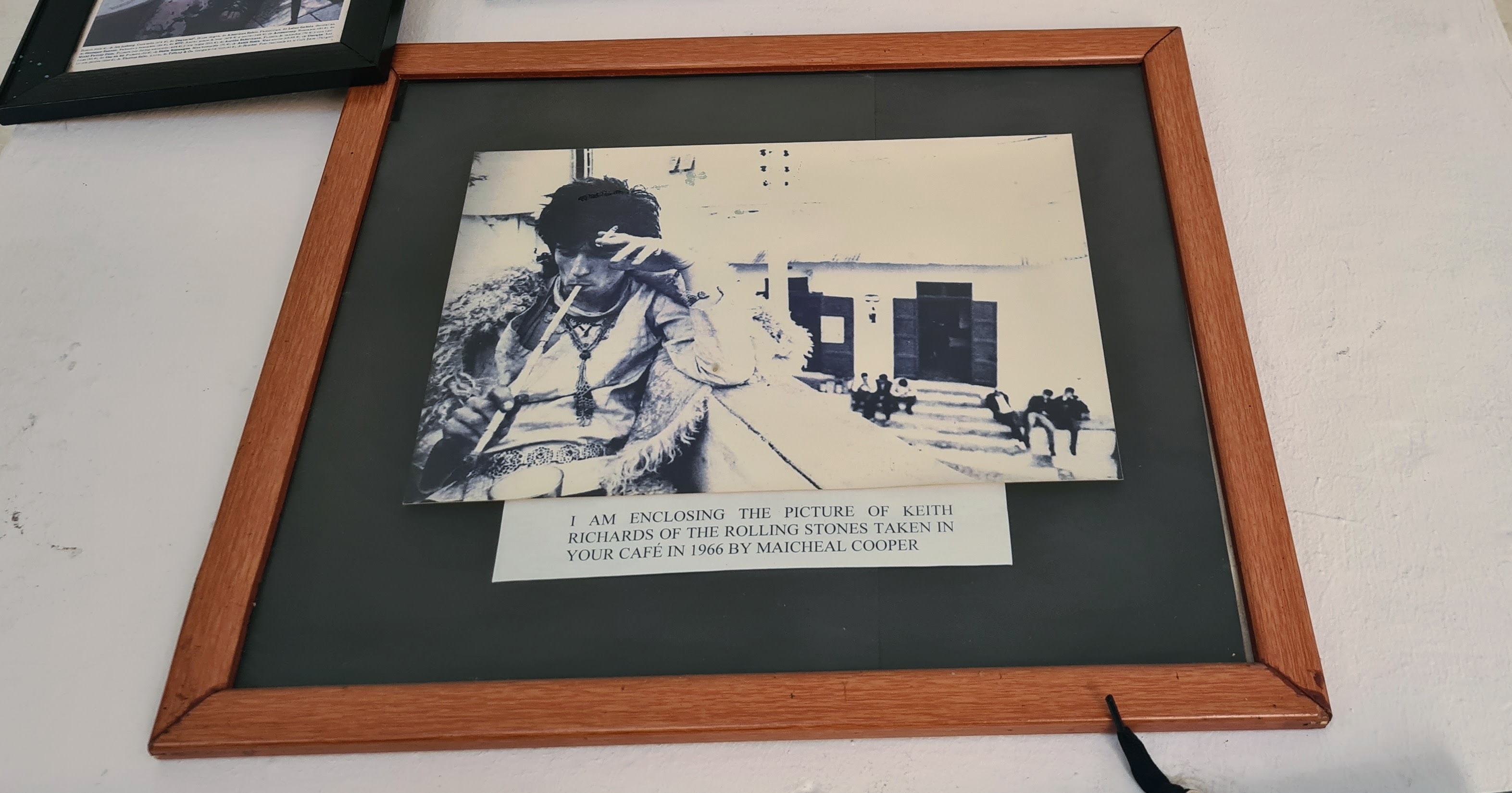
Tangier’s medina is a true maze of streets. Walking aimlessly, we unexpectedly arrived at the legendary Cafe Baba. This café – a symbol of 50s and 60s bohemia – attracted exceptional visitors. Not only Beat generation writers gathered here, but also The Rolling Stones members seeking refuge from fame. The walls display historic photos: Keith Richards possibly smoking hashish, Anthony Bourdain’s visit documentation, Barbara Hudson’s portrait. Her villa (Villa Sidi Hosini) is just across the street. Legends say she visited here and then invited people to continue parties at her place.
We considered exchanging money at a bank since the dirham rate is better, but managed fine with euros. Worth noting that Visa and Mastercard aren’t popular in this region. While watching cats and wandering the medina streets, lunchtime arrived. We had to try tagine – a traditional Moroccan dish. Restaurant Rif Kebdani served us a three-course lunch: starting with appetizers – olives, bread, lentil stew and spicy sauce, then enjoying tagine, and finishing with traditional mint tea and sweets. Moroccan cuisine earns 12 points!
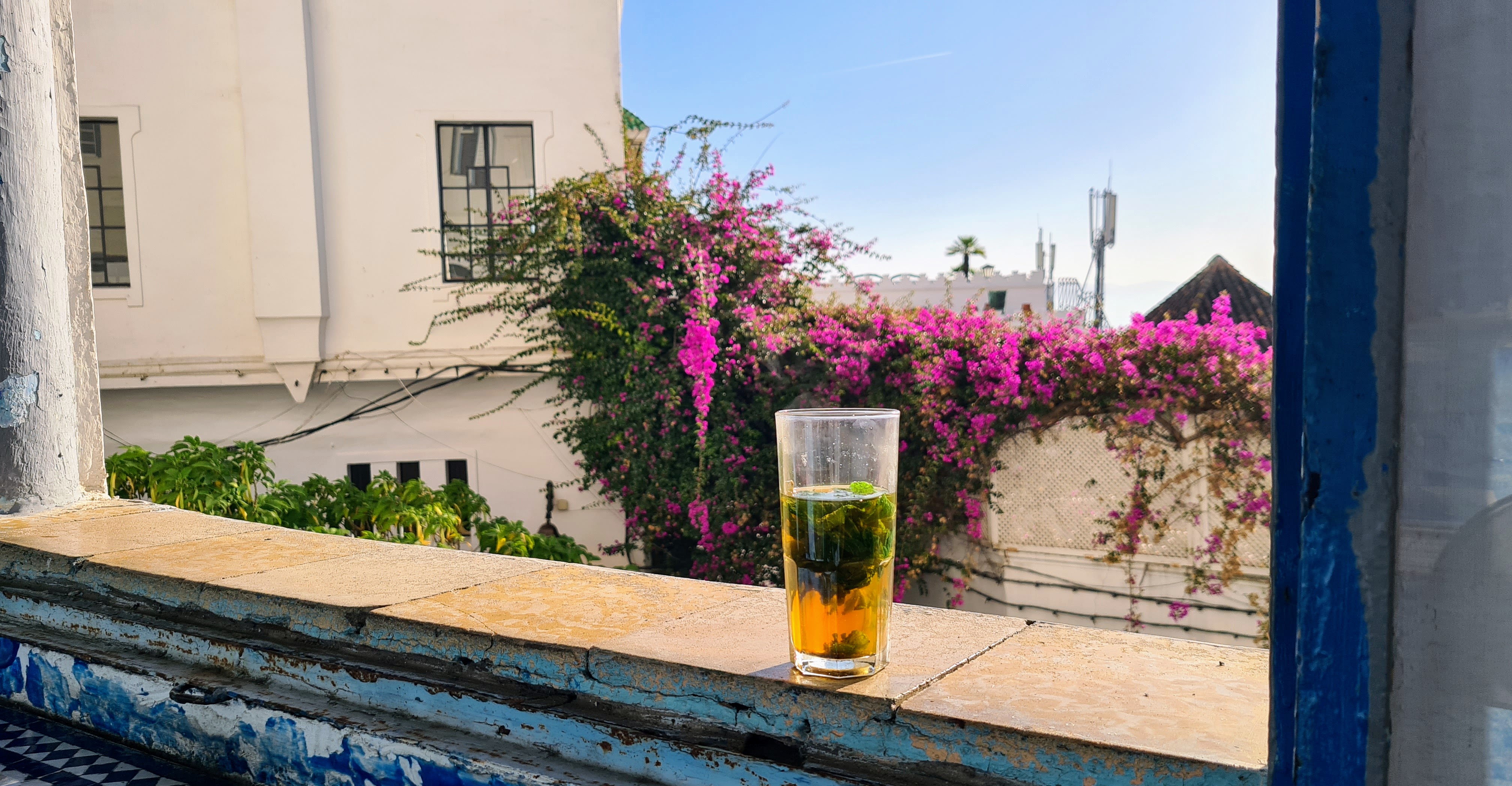
In the afternoon, we had to solve a logistics puzzle – how to get back to that god’s forsaken Tangier Med, since ferries to Algeciras don’t depart from the city port. We consulted ChatGPT for the best option – it suggested taking a train. A little bit of more adventures wouldn’t hurt. Unfortunately, at the railway station we learned there are no trains to Tangier Med – seems AI fed us outdated information.
After negotiating with taxi drivers, we agreed on 25 euros plus 50 MAD for the return trip to the port. Ferry instructions required arriving an hour before departure. We did, but hit a massive crowd of travelers. Seemed like all Morocco’s residents decided to leave the country this fine Wednesday – each with mountains of luggage. No wonder baggage and passport control was stuck, with just one officer for a 150-person queue.
Time mercilessly ticked away, and when we finally reached the bus to the ferry, it was too late – the ferry had left 5 minutes ago. We cursed the AI for wrong information, cursed travelers who somehow needed to pack their entire homes. All we could do was accept the situation and wait for the next ferry.
Celebrating a birthday in Morocco was truly memorable – no one can deny that. We brought back not just impressions, but an adventurous story about nearly having to sleep among Maersk containers. Sometimes the best travel memories come from such unexpected situations.

